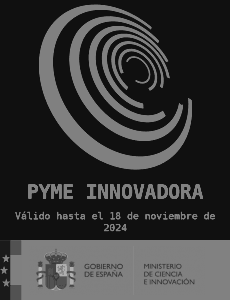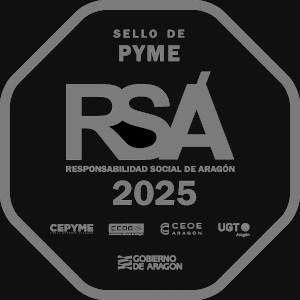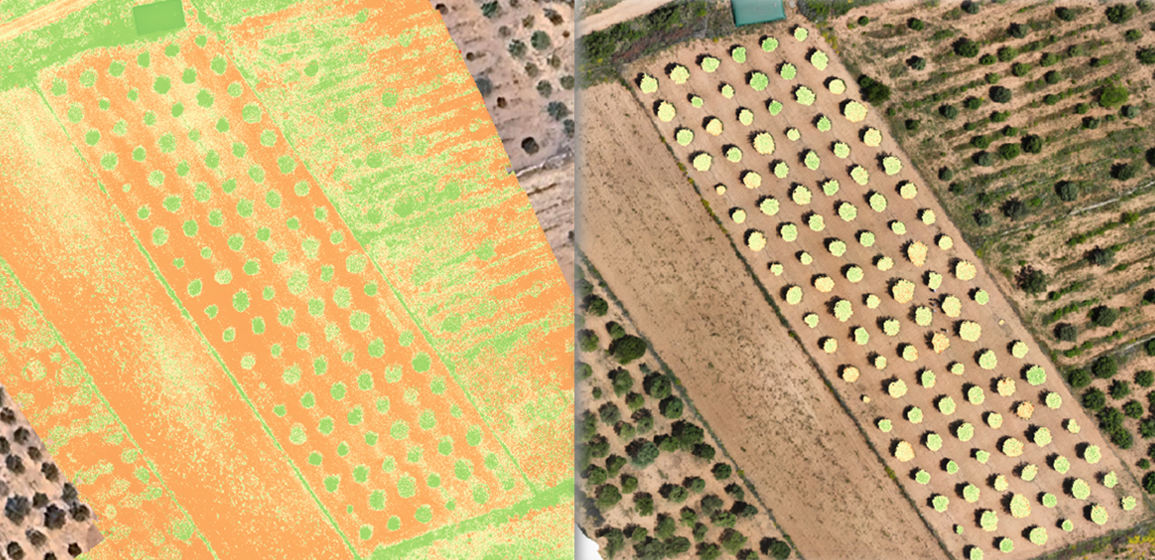
PROGRESS ON THE TECNOTRUF PROJECT
At GEOSLAB, we are working on the TECNOTRUF project, an initiative that applies advanced technology to improve the productivity of truffle plantations.
What are we researching?
Our work focuses on analysing images taken with a hyperspectral camera installed on a drone. Thanks to these images, we can calculate a key indicator of the condition of the trees: the Photochemical Reflectance Index (PRI).
Why is PRI important?
PRI reflects the photosynthetic efficiency of trees:
- 🌱 High PRI → the plant is healthy and makes good use of light.
- 🌵 Low PRI → indicates stress due to lack of water, nutrients or excess radiation.
With this information, farmers can adjust irrigation, fertilisation, or crop management in real time.
How do we do it?
1.- Image capture
The drone collects more than 40,000 images in 10 different bands, with 70% overlap, ensuring complete and accurate coverage.
2.-Orthomosaic creation
We generate an orthomosaic for each band (a large, unified and corrected image) for each plot. To calculate the PRI, we use bands 3 and 4, which show reflectance in two ranges of green (531 nm and 570 nm).
3.- Calculating the PRI in QGIS
We apply the mathematical formula in the QGIS raster calculator:

The result is an image with a pixel resolution of 5 cm showing the photosynthetic efficiency of each area of the plot.
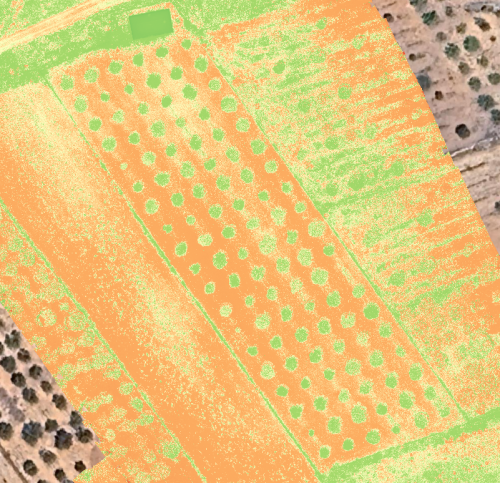
4.- Identification of holm oak crowns
To focus solely on the trees and not on the ground vegetation, we calculate the NDVI (Normalised Difference Vegetation Index).
This index allows us to distinguish active vegetation and, from it, we extract the pixels corresponding to the crowns of the holm oaks.
5.- Vectorisation and cropping
We transform the information into vector polygons (individual crowns) and crop those areas on the image of PRI. This gives us index values only for the crowns of holm oaks, isolating the truly useful information.
6.- Final results
The result is high-resolution, georeferenced images that can be extremely useful for precision farming.
This data is then integrated with field sensors and ecological analyses for comprehensive monitoring.
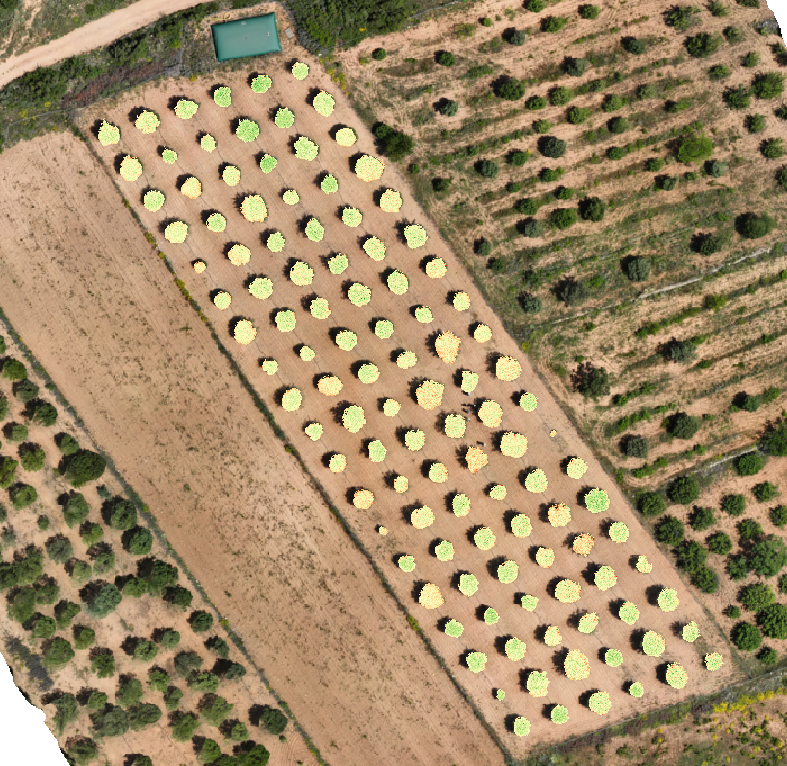
What do we achieve with this?
A practical tool for:
✅ Optimising irrigation.
✅ Applying fertilisers only when necessary.
✅ Detect stress early.
✅ Improve the productivity of truffle farms.
The project has a budget of €599,131, co-financed by the European Agricultural Fund for Rural Development (EAFRD, 80%) and the Ministry of Agriculture, Fisheries and Food (MAPA, 20%).


